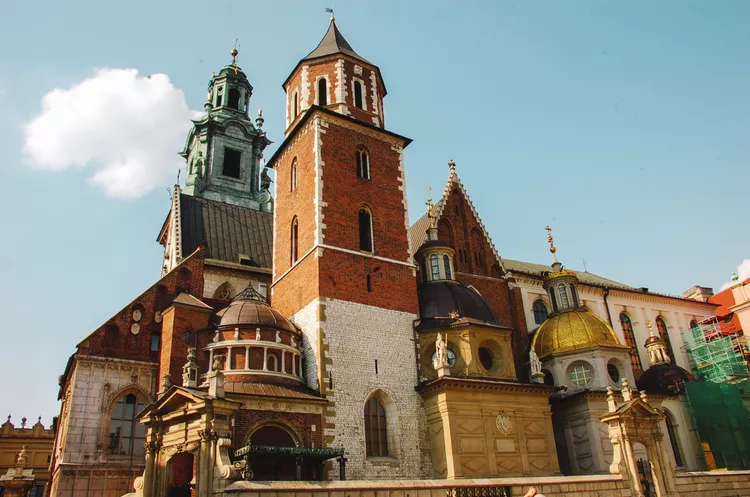Population: 38,192,000
Location: Poland, an East Central European nation, borders six countries: Germany, Czech Republic, Slovakia, Ukraine, Belarus, Lithuania, and a Russian exclave, Kaliningrad Oblast. Its Baltic Sea coast spans 328 miles. See a map of Poland for more geographical information.
Capital: Warsaw (Warszawa), population = 1,716,855.
Currency: Złoty (PLN), pronounced “zwoty” with a short o. View Polish coins and Polish banknotes.
Time Zone: Central European Time (CET) and CEST during summer.
Calling Code: +48
Internet TLD: .pl
Language and Alphabet: The Poles have their own language, Polish, which employs the Latin alphabet with a few additional letters, specifically the letter ł, pronounced like the English w. Thus, kiełbasa is pronounced “kew-basa.” Locals usually have basic knowledge of German, English, or Russian, with German being more prevalent in the west and Russian in the east.
Religion: Nearly 90% of the population identifies as Roman Catholic, making religion a significant aspect of Polish identity.
Poland’s Top Sights
- Krakow: This vibrant city is Poland’s top destination and features a sprawling historic center renowned for its captivating beauty and lively atmosphere. With a large student populace, Krakow maintains a youthful energy. Explore Krakow’s must-see spots to ensure you experience its rich history and culture.
- Old Town Warsaw: Resurrected from the ruins of World War II, Old Town Warsaw is a World Heritage Site and a testament to the resilience of its community, rebuilt brick by brick with unwavering pride.
- Poland’s Black Madonna: The Black Madonna of Czestochowa is the country’s most revered holy relic, attracting countless pilgrims to the monastery that houses it. The icon itself may be small, but its significance is immense.
Poland Travel Facts
Visa Information: Visitors from numerous countries, including the US, can enter Poland with just a passport. However, visas are necessary for stays longer than 90 days. Exceptions are made for citizens of Russia, Belarus, and Ukraine, who require a visa for any visit.
Airports: Tourists typically use one of three airports: Gdańsk Lech Wałęsa Airport (GDN), John Paul II International Airport Kraków-Balice (KRK), or Warsaw Chopin Airport (WAW). Warsaw’s airport is the busiest and offers extensive train and plane connections to other cities.
Trains: Polish rail travel is developing but currently does not match the standards of other European nations. Nonetheless, train travel remains a viable option for those wishing to visit multiple cities. For example, an express train journey from Krakow to Gdansk via Warsaw takes approximately 8 hours, so plan accordingly. International train connections can be less comfortable, with a noted poor reputation for night trains between Prague and several tourist destinations. It’s advisable to opt for a private sleeper car for a more pleasant experience.
Ports: Passenger ferries provide connections between Poland and Scandinavia. Gdańsk is primarily served by Polferries.
Poland History and Culture Facts
History: Poland became a unified state in the 10th century and was governed by a series of kings. Between the 14th and 18th centuries, Poland and Lithuania were politically united. The late 18th century saw the implementation of a significant constitution, an important milestone in European history. The next century witnessed Poland’s territory contested and divided; however, it was re-established after WWI. The impact of WWII was profound, and today, some historical sites, including Nazi camps, may be visited to learn about this dark chapter involving the persecution of groups such as Jews, Roma, and the disabled. From the end of the 20th century, the fall of communism reshaped Poland and its relations with Eastern and East Central Europe.
Culture: The rich Polish culture is a major attraction for visitors. From its exquisite cuisine to traditional handcrafted items, Polish folk costumes, and diverse holidays celebrated throughout the year, the charm of Poland’s culture is captivating. Explore more about Poland’s cultural heritage through photography.





